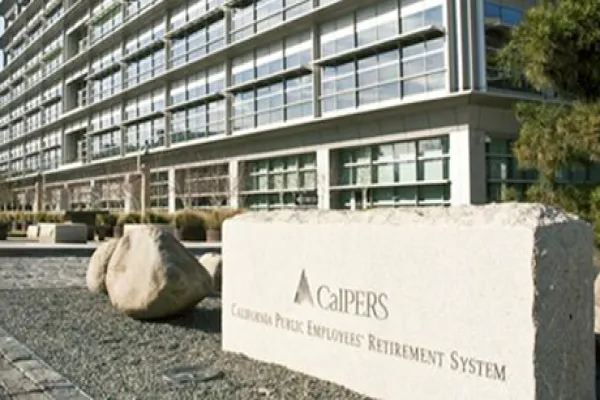Most of the big technological advances in finance over the past few millennia have primarily helped traders, largely bypassing the world of investors. From carrier pigeons to ticker tapes to Bloomberg and most obviously to the world of high frequency trading, the key technological objective has been increased speed: to markets, to news, to the answers to hard questions and to just about anything that could give a trader an edge.
But investors, unlike traders, draw their competitive advantage from much more than just speed; they need inferences and insights about opportunities and the world. They want answers to questions that they didn’t know even needed to be asked. This kind of inferential capability, however, hasn’t advanced nearly as much as speed. In fact, the Babylonians used spreadsheets that rivaled the ones you’re using today. They recorded pricing information for six key commodities (barley, dates, mustard, cardamom, sesame and wool) into clay records and then correlated these prices with the water conditions of the Euphrates River, in terms of depth and flow. It’s 4,000 years later, and these cuneiform accounts would still sound state-of-the-art to some public pension funds.
In short, most of our investment technology has prioritized latency over inference, and I think this has contributed to the pervasive short-termism we see today in financial markets. Why? Because asset managers — in pursuit of a competitive edge over their peers in order to win mandates from clients — have turned to technologies focused on speed and have thus become more and more like short-term traders and less and less like long-term investors. Today the average time horizons of investors are the shortest they have ever been. Research shows that among typical asset manager portfolios turnover is around 72 percent per year, and 20 percent of managers have more than 100 percent turnover.
I accept that there are many culprits driving this short-termism, such as poor governance among long-term investors (LTIs), poor oversight of managers by LTIs, poor compensation policies within LTIs, and a poor understanding of investment products and the embedded fees (and thus incentives) by LTIs. But I can assure you, technology’s focus on speed has been complicit in this trend. And the consequences of this for finance, and indeed capitalism, are profound. The frequent buying and selling of assets encourages zero-sum games in which the only winner is Wall Street! In a world in which investors are being converted into traders, it’s no wonder the financial services industry captures 38 percent of all corporate profits in America.
Encouragingly, this fact is not lost on the smartest long-term investors in the world. The in-sourcing trend among Giants stems from the realization that there are distinct differences between optimal investment strategies for today’s asset managers and those for today’s asset owners. The former are relying on short-term tools to try to deliver alpha, while the latter (rightly) recognize that smart investors can differentiate themselves over long horizons. This is from the horses’ mouths:
• New Zealand Super Fund: “Investors with a long-term horizon can outperform more short-term-focused investors over the long run.”
• Ontario Teachers’ Pension Plan: “Our long investment time horizon supports our primary goal of generating the superior returns required to fund our members’ current and future pensions.”
• APG: “The long horizon offers additional opportunities for returns.”
You get the point. Sadly, these investors have very few tools to help them in their long-term investments. Many depend on bespoke investment beliefs to guide their thinking and provide some rigor for long-horizon bets outside the mainstream trading world. The number of variables affecting long-horizon market movements is simply too great for human intelligence to appreciate.
So . . . what about artificial intelligence?
Many readers are likely familiar with the recent AlphaGo spectacle in which an artificially intelligent Go player (i.e., a machine) beat a very intelligent human player (the best in the world, in fact) at the board game. The AI, which was a mix of hardware and software mimicking a brain’s neural network, used Monte Carlo tree search algorithms to utilize knowledge that it cultivated via training with humans and with other computers. Here’s the punch line: The AI was able to consider all the potential moves in this extremely complex game — far more complex than chess — and as a result it did something remarkable. It made a move that no human would ever make. . . and with that move, it won.
What does this mean? Well, it means to my barely intelligent human brain that AIs can now understand remarkably complicated environments and mobilize knowledge that we cannot. And with that knowledge they can make moves that are beyond human understanding. When AlphaGo made the fateful move, the human player left the room trembling to collect himself, while the expert in attendance had one thing to say: “Beautiful . . . so beautiful.”
I’m not saying that AIs will be able to prescribe long-horizon trades to long-term investors tomorrow. But what I am saying is that AIs offer a new form of investment technology that, for the first time in 4,000 years, could give investors a truly game-changing edge that doesn’t rely so heavily on speed.
AIs will be able to consider — just as AlphaGo did for Go — deeper risks and even uncertainties of future markets, future growth and future scenarios and, in turn, provide investors with tools that can dramatically increase long-term returns. Looking out over a longer time horizon, an AI could learn to unearth factors that are truly material for an underlying company or asset and then base investment recommendations on the performance of those characteristics. It may take time for these performances to be realized, but that’s not a problem for long-term investors.
Imagine then that these inferential tools become so powerful that asset managers stop relying on trading technologies for their edge and begin to rely on inferential technologies that extend the average holding periods of investments. Crazy? Well, as my postdoc at Stanford, Dane Rook, occasionally reminds me, we are surely nearing a hard limit in the speed of data transmission: Data can’t travel faster than the speed of light. However, is there any such equivalent upper bound to the inferential depth that is possible? It’s hard to say, but with enough data it may not be so!
The rise of long-term robots may be upon us, and that could be a catalyst for investment time horizons to reverse their current downward trend. That’d be a very good thing for the future of finance and, indeed, capitalism.






